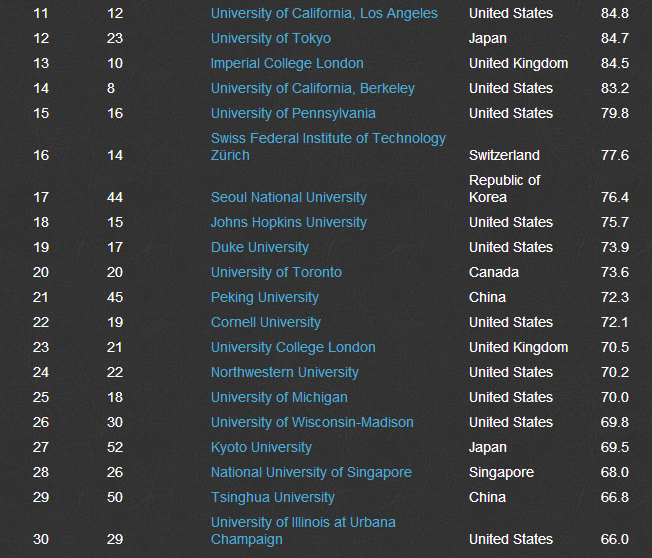Peking University, Jun. 1, 2014: Peking University (PKU) narrowly misses a seat among the world’s Top 20 for teaching, according to the latest release by the Times Higher Education (THE), one of the few globally recognized university ranking organizations.

PKU ranks 21st as the best Chinese institution for teaching.
PKU scores 72.3 out of the 100. Across Asia, the China’s No. 1 lags behind two neighboring counterparts, the University of Tokyo (84.7, 12th) and Seoul National University (76.4, 17th). Tsinghua University (66.8, 29th) [a domestic challenger of PKU] is also lucky enough to be on the list.
Harvard University leads the Top 10 list.
PKU was crowned earlier this year as the best institution in “emerging economies” (classified by FTSE, including the “BRICS” nations of Brazil, Russia, India, China and South Africa) by the same magazine. It now stays in 45th place of the THE’s overall World University Rankings 2013-2014.
Among all the 13 separate performance indicators in five areas of the overall rankings, the THE uses 5 to examine a university’s teaching and learning environment from both the student and the academic perspectives.
Collectively given a weight of 30 percent towards the overall ranking score, the five factors include:
Academic Reputation (50%)
The data comes from the world’s largest invitation-only reputation survey of global academic opinion by Thomson Reuters in spring 2013. There were just over 10,000 responses from experienced scholars, statistically representative of global higher education's geographical and subject mix.
Doctorates scaled for its size (20%)
As well as giving a sense of how committed an institution is to nurturing the next generation of academics, a high proportion of postgraduate research students suggests the provision of teaching at the highest level that is thus attractive to graduates and effective at developing them. This indicator is normalized to take account of a university's unique subject mix, reflecting the different volume of doctoral awards in different disciplines
Staff-to-student Ratio (15%)
Where there is a healthy ratio of students to staff, the former will get the personal attention they require from the institution's faculty.
Doctorate-to-bachelor ratio (7.5%)
An institution is more knowledge-intensive with a high density of research students. The presence of an active postgraduate community is a marker of a research-led teaching environment valued by undergraduates and postgraduates alike.
Total resources scaled for its size (7.5%)
Adjusted for purchasing-power parity [so that all nations may compete on a level playing field], this figure indicates the general status of an institution and gives a broad sense of the infrastructure and facilities available to students and staff.
Edited by: Arthars
Source: The Times Higher Education